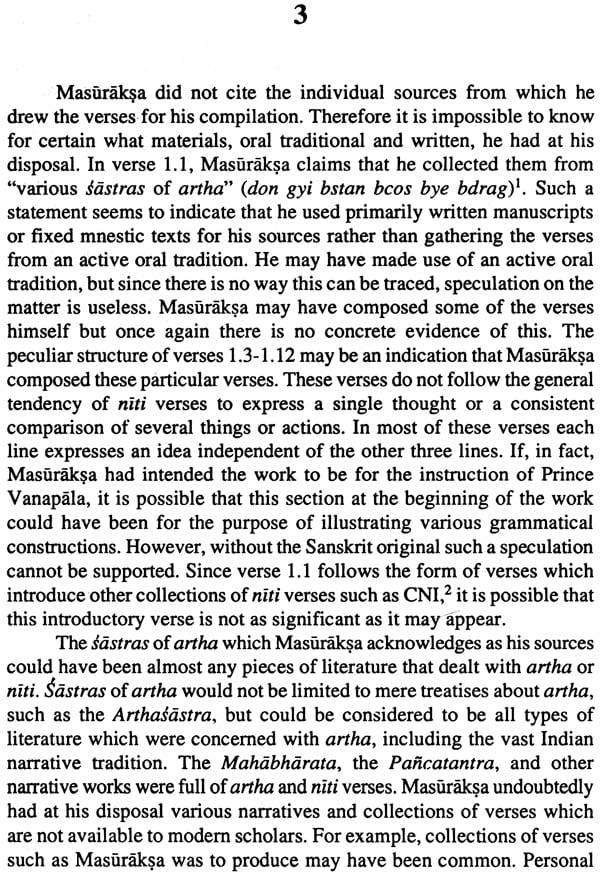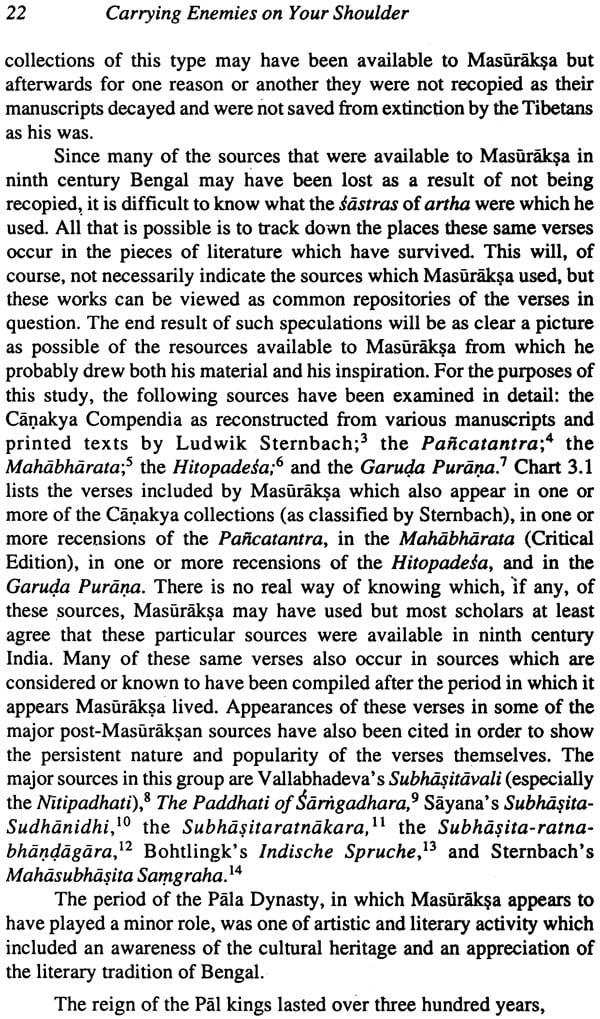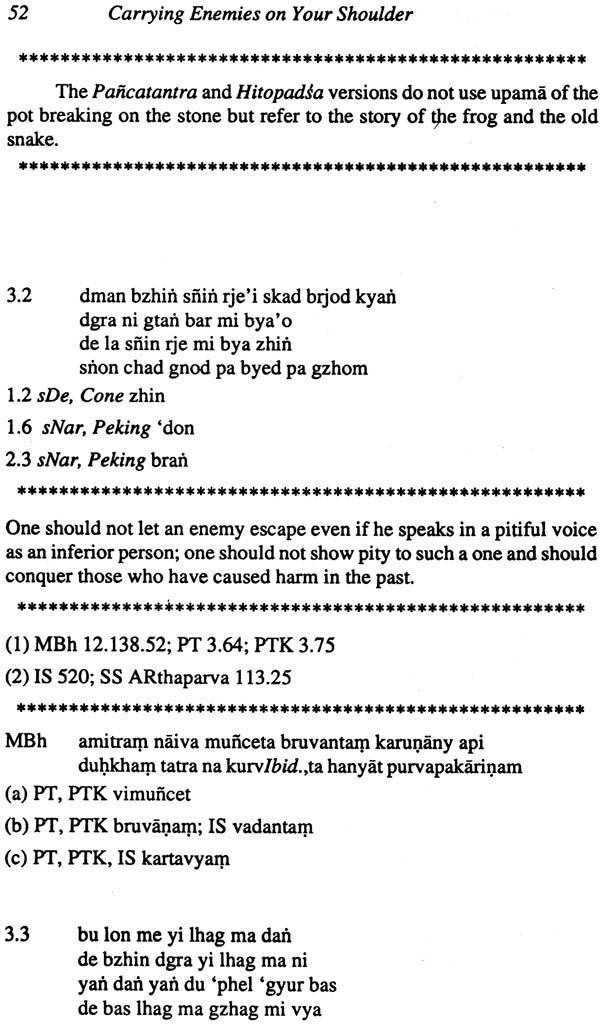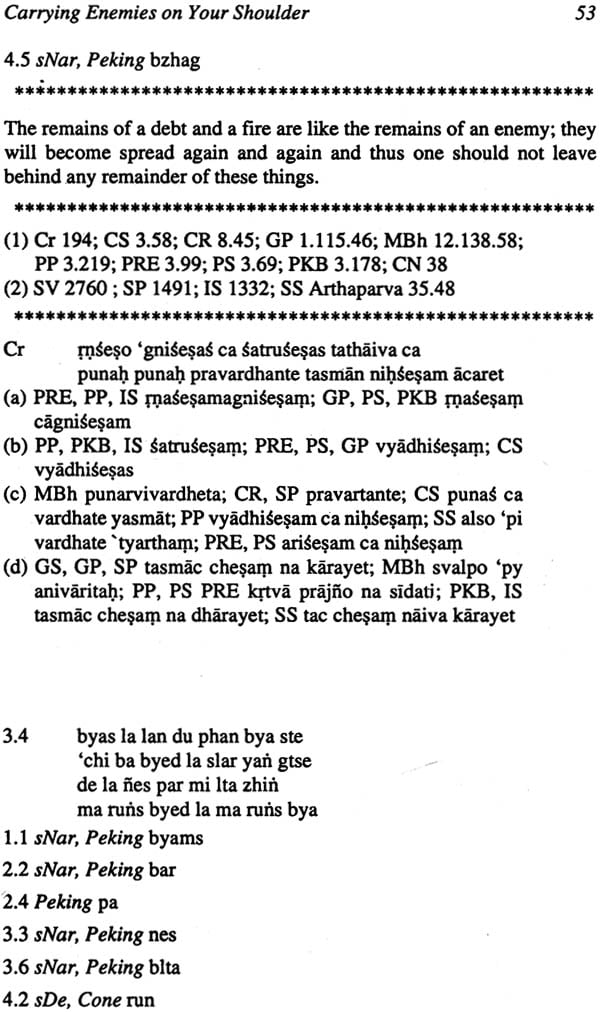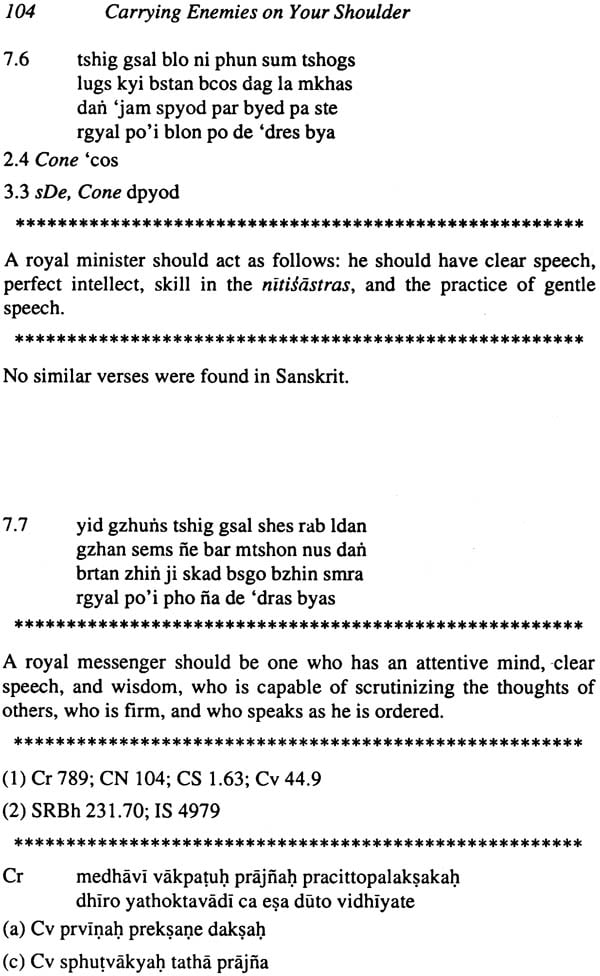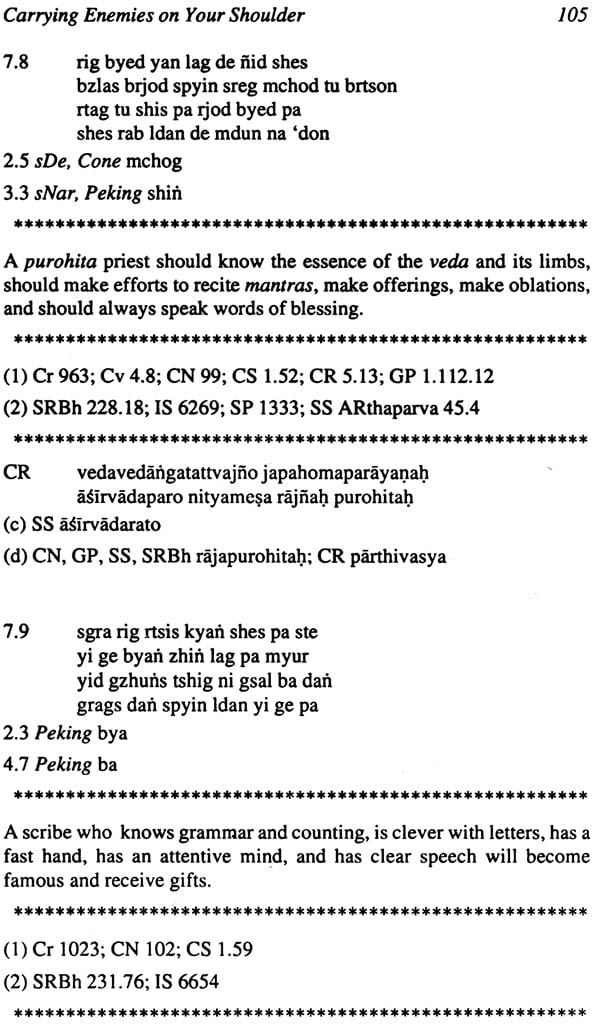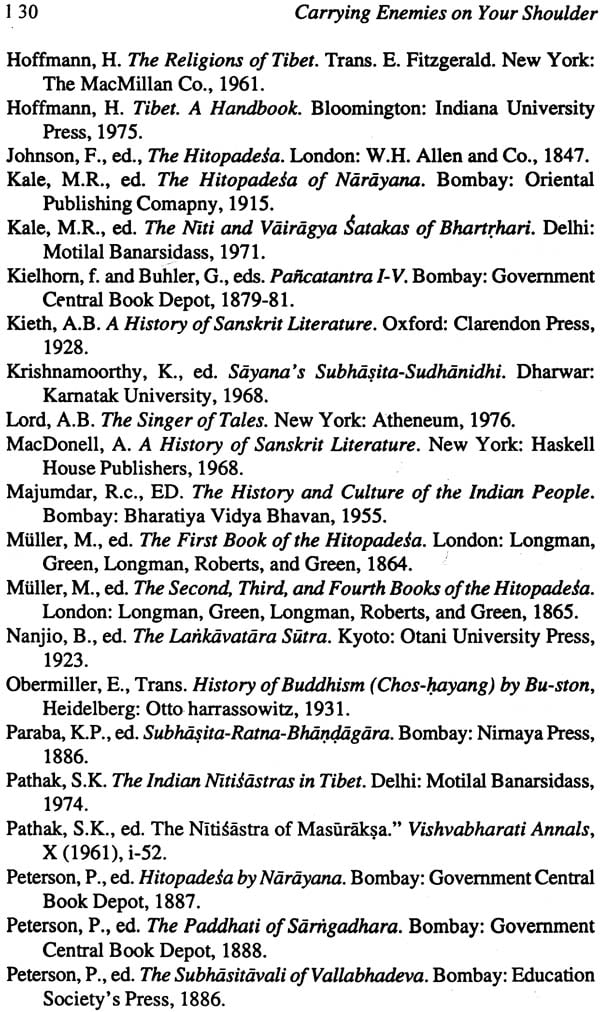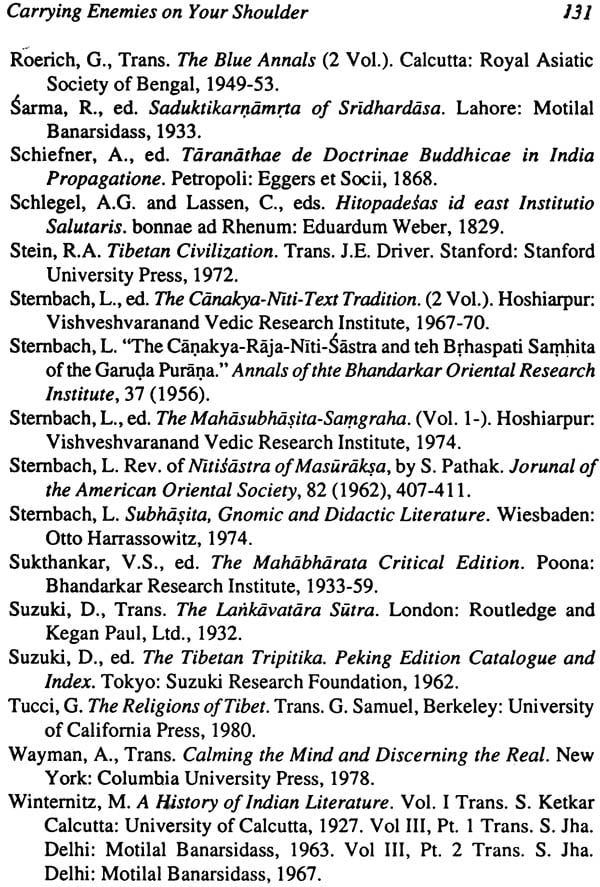
Carrying Enemies on Your Shoulder: Indian Folk Wisdom in Tibet
Book Specification
| Item Code: | NAC627 |
| Author: | Hugh Meredith Flick, Jr. |
| Publisher: | Sri Satguru Publications |
| Language: | English |
| Edition: | 1996 |
| ISBN: | 8170304792 |
| Pages: | 137 |
| Cover: | Hardcover |
| Other Details | 8.8 Inch X 5.8 Inch |
| Weight | 280 gm |
Book Description
The tapestry of the cultural interaction between India and Tibet is an intricate interweaving of many patterns and threads. The most evident cultural interaction between Tibet and India involved religion, there were many other interactions as well. Many of these interactions involved areas of human activity normally associated with folklore. The oral traditions of each culture, being the repositories of much of this material, absorbed and assimilated the exchanged materials. One of the generic groups of folklore which crosses cultural boundaries very readily is folk wisdom. Since folk wisdom is an in important part of an active oral tradition it is often preserved in the form of short verses. Very little of such folk wisdom, the Tibetan oral tradition has survived in written sources but a substantial amount has beat preserved in various forms from the Indian oral tradition.
The Nitisastra of Masuraksa the Sanskrit original of which has not survived but a translation of it in Tibetan is found in the bsTan ‘Gyur. It seems most likely that Masuraksa drew both from manuscript sources and from oral traditional sources to put together this particular nitisastra. In the first verse of the collection, Masuraksa sates that he collected the verses from various sastras of artha (don gyi bstan dcos bye brag las). As an example of ninth century collections of niti verses, Masuraksa’s collection is an indicator of the range of verses that were popular during that period. The present book contains a detailed introduction, Sanskrit sources of Masuraksa’s verses, Translation of the Tibetan Text of the Nitisastra of Masuraksa with annotations of occurrences in Sanskrit literature.
Masuraksas text is an important contribution towards understanding the cultural interaction between India and Tibet. It was selected by the Tibetan compiles of bsTan ‘Gyur as a piece of secular Indian literature worth translating and preserving in their sacred literature.
This study of the Nitisastra of Masuraksa was begun several years ago as a means of examining one aspect of folklore in India. Mu verses are an important part of the heritage of folklore from ancient India. Although the focus of this study is on a single collection of nit! Verses, the processes involved in its compilation and proliferation illustrate the dynamics of the interrelation between folklore and written literature. This particular collection is also significant since it provides a case study of the cultural interaction between India and Tibet. This study is only the beginning of a more comprehensive inquiry into the nature of the oral tradition in ancient India.
The library facilities at Harvard contain three of the four available recensions of the bsTan ‘Gyur. The .sDe-dGe Edition and the sNar-Thang Edition in wood-block printed bundles are housed in the Harvard-Yenching Library. The Cone Edition is available on microfiche in the Harvard-Yenching Library as well. The Peking Edition is available on interlibrary loan from the University of Indiana Library. The Sanskrit collection in Widener Library, Harvard University, contains all the major references used in the process individual verses in various Sanskrit works.
I wish to express my sincere gratitude to Professor Daniel H.H. Ingalls for his guidance throughout my work with nit! Verses Under his direction I have been able to read widely within Sanskrit narrative literature. This has been especially useful for my work as an Instructor in Folklore and Mythology. Professor Ingalls suggested many useful references arid sources for the particular verses in Masuraksa’s collection. He also provided me with many useful suggestions on Sanskrit verses.
I would like to thank Professor Masatoshi Nagatomi for the long hours he spent helping me iron out the subtleties of certain of the Tibetan verses and helping me make sense out of others. Professor Nagatomi also made many valuable suggestions concerning my research on the cultural interaction between India and Tibet. I would also like to thank Mr. Siddiq Wahid and the Venerable Tulku Thondup who helped me with their personal knowledge of colloquial and classical Tibetan.
I wish to extend my very special thanks to Harriet Caplan, whose patience and support lasted through the numerous drafts of this dissertation. Her encouragement and moral support were instrumental.
| Preface | v | |
| List of Charts | ix | |
| Abbreviations | xi | |
| 1. Introduction to Niti and the Nitisastra of Masuraksa | 1 | |
| 2. The Compilation and Translation of the Nitisastra of Masuraksa | 9 | |
| 3. The Sanskrit Sources of Masuraksa’s verses | 21 | |
| 4. Translation of the Tibetan Text of the Nitisastra of Masuraksa with Annotations of Occurrences in Sanskrit Literature | 32 | |
| 5. Conclusion | 113 | |
| Charts | 115 | |
| Bibliography | 129 |
